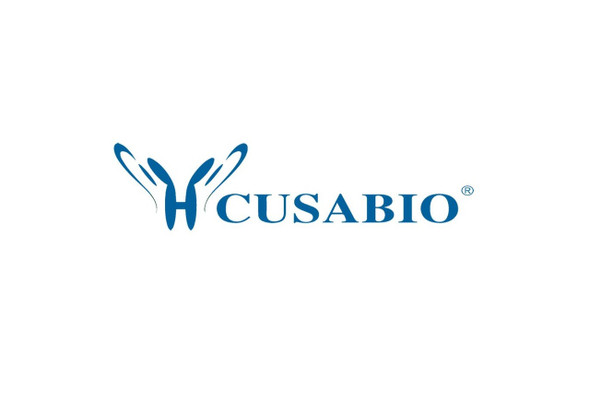Cusabio Mouse Recombinants
Recombinant Mouse Stromal cell-derived factor 1 (Cxcl12), partial | CSB-EP006242MO1
- SKU:
- CSB-EP006242MO1
- Availability:
- 13 - 23 Working Days
Description
Recombinant Mouse Stromal cell-derived factor 1 (Cxcl12), partial | CSB-EP006242MO1 | Cusabio
Alternative Name(s): 12-O-tetradecanoylphorbol 13-acetate repressed protein 1 ;TPAR1C-X-C motif chemokine 12;Pre-B cell growth-stimulating factor ;PBSFThymic lymphoma cell-stimulating factor ;TLSF
Gene Names: Cxcl12
Research Areas: Others
Organism: Mus musculus (Mouse)
AA Sequence: KPVSLSYRCPCRFFESHIARANVKHLKILNTPNCALQIVARLKNNNRQVCIDPKLKWIQEYLEKALNK
Source: E.coli
Tag Info: N-terminal 6xHis-tagged
Expression Region: 22-89aa
Sequence Info: Partial
MW: 12 kDa
Purity: Greater than 90% as determined by SDS-PAGE.
Relevance: Choattractant active on T-lymphocytes, monocytes, but not neutrophils. Activates the C-X-C chokine receptor CXCR4 to induce a rapid and transient rise in the level of intracellular calcium ions and chotaxis. Also binds to atypical chokine receptor ACKR3, which activates the beta-arrestin pathway and acts as a scavenger receptor for SDF-1. Acts as a positive regulator of monocyte migration and a negative regulator of monocyte adhesion via the LYN kinase. Stimulates migration of monocytes and T-lymphocytes through its receptors, CXCR4 and ACKR3, and decreases monocyte adherence to surfaces coated with ICAM-1, a ligand for beta-2 integrins. SDF1A/CXCR4 signaling axis inhibits beta-2 integrin LFA-1 mediated adhesion of monocytes to ICAM-1 through LYN kinase. Plays a protective role after myocardial infarction. Induces down-regulation and internalization of ACKR3 expressed in various cells . Has several critical functions during bryonic development; required for B-cell lymphopoiesis, myelopoiesis in bone marrow and heart ventricular septum formation.Stimulates the proliferation of bone marrow-derived b progenitor cells in the presence of IL-7 as well as growth of the stromal cell-dependent B-cell clone DW34 cells.
Reference: Defects of B-cell lymphopoiesis and bone-marrow myelopoiesis in mice lacking the CXC chemokine PBSF/SDF-1.Nagasawa T., Hirota S., Tachibana K., Takakura N., Nishikawa S., Kitamura Y., Yoshida N., Kikutani H., Kishimoto T.Nature 382:635-638(1996)
Storage: The shelf life is related to many factors, storage state, buffer ingredients, storage temperature and the stability of the protein itself. Generally, the shelf life of liquid form is 6 months at -20?/-80?. The shelf life of lyophilized form is 12 months at -20?/-80?.
Notes: Repeated freezing and thawing is not recommended. Store working aliquots at 4? for up to one week.
Function: Chemoattractant active on T-lymphocytes, monocytes, but not neutrophils. Activates the C-X-C chemokine receptor CXCR4 to induce a rapid and transient rise in the level of intracellular calcium ions and chemotaxis. Also binds to atypical chemokine receptor ACKR3, which activates the beta-arrestin pathway and acts as a scavenger receptor for SDF-1. Acts as a positive regulator of monocyte migration and a negative regulator of monocyte adhesion via the LYN kinase. Stimulates migration of monocytes and T-lymphocytes through its receptors, CXCR4 and ACKR3, and decreases monocyte adherence to surfaces coated with ICAM-1, a ligand for beta-2 integrins. SDF1A/CXCR4 signaling axis inhibits beta-2 integrin LFA-1 mediated adhesion of monocytes to ICAM-1 through LYN kinase. Plays a protective role after myocardial infarction. Induces down-regulation and internalization of ACKR3 expressed in various cells (By similarity). Has several critical functions during embryonic development; required for B-cell lymphopoiesis, myelopoiesis in bone marrow and heart ventricular septum formation.
Involvement in disease:
Subcellular Location: Secreted
Protein Families: Intercrine alpha (chemokine CxC) family
Tissue Specificity: Highest expression levels detected in kidney, liver, spleen and muscle. Isoform Alpha is expressed ubiquitously but at varying levels, while isoform Beta displays tissue-specific expression, with expression detected in kidney, liver, heart, spleen and muscle but not in lung, colon, brain, skin and stomach.
Paythway:
Form: Liquid or Lyophilized powder
Buffer: If the delivery form is liquid, the default storage buffer is Tris/PBS-based buffer, 5%-50% glycerol. If the delivery form is lyophilized powder, the buffer before lyophilization is Tris/PBS-based buffer, 6% Trehalose, pH 8.0.
Reconstitution: We recommend that this vial be briefly centrifuged prior to opening to bring the contents to the bottom. Please reconstitute protein in deionized sterile water to a concentration of 0.1-1.0 mg/mL.We recommend to add 5-50% of glycerol (final concentration) and aliquot for long-term storage at -20?/-80?. Our default final concentration of glycerol is 50%. Customers could use it as reference.
Uniprot ID: P40224
HGNC Database Link: N/A
UniGene Database Link: UniGene
KEGG Database Link: KEGG
STRING Database Link: STRING
OMIM Database Link: N/A









